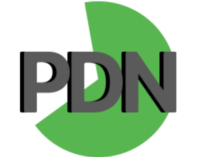Business Line of Credit
A Professional Guide to Understanding and Utilizing This Financing Option
Advertising
A business line of credit is a flexible financing option that allows businesses to access funds up to a predetermined limit. Unlike traditional loans, businesses only pay interest on the amount they withdraw from the credit line, making it a cost-effective way to manage cash flow.
The credit line can be used for various purposes, including inventory purchases, payroll, and unexpected expenses.

One of the benefits of a line of credit is that it provides businesses with the flexibility to borrow funds when they need them. This can be particularly helpful for businesses that experience seasonal fluctuations in revenue or have unpredictable cash flow. With a credit line in place, businesses can quickly access the funds they need to cover expenses and take advantage of opportunities as they arise.
However, it’s important to note that not all businesses are eligible for a line of credit, and the terms and conditions of the credit line can vary depending on the lender. Before applying for a line of credit, businesses should carefully consider their financial situation and determine if it’s the right financing option for their needs.
How it works
Types
There are two types of business lines of credit: secured and unsecured. A secured line of credit requires collateral, such as inventory, equipment, or accounts receivable, to secure the loan. An unsecured line of credit does not require collateral but may require a personal guarantee or a higher credit score to qualify.
Qualifying
To qualify for a business line of credit, businesses must have a good credit score, a solid business plan, and a history of profitability. Lenders will also consider the business’s cash flow, the amount of credit requested, and the purpose of the loan. Businesses that meet these requirements may be eligible for a business line of credit with competitive interest rates and flexible repayment terms.
Advantages
A line of credit provides several advantages over other types of financing options. It offers flexibility in terms of repayment and can be used for a variety of business purposes. Additionally, businesses only pay interest on the amount of credit used, not the entire credit line. This means that businesses can save money on interest charges by only borrowing what they need.
Common Uses
Businesses can use a line of credit for a variety of purposes, including paying for inventory, covering payroll expenses, financing short-term projects, and managing cash flow. A line of credit is also useful for businesses that need to make unexpected purchases or handle emergency expenses.
Overall, a business line of credit is a useful financing option for businesses that need flexibility in terms of repayment and borrowing. By understanding the types of business lines of credit available, the qualifications required, and the advantages and common uses of this financing option, businesses can make informed decisions about their financing needs.
Comparing Business Line of Credit with HELOC
Business owners who need to finance their business expenses have several options, including a business line of credit and a home equity line of credit (HELOC). While both of these financing options can provide similar benefits, there are some key differences that business owners should be aware of before deciding which option is best for their business.
Differences in Application Process
One of the main differences between a line of credit and a HELOC is the application process. To apply for a line of credit, a business owner typically needs to provide financial statements, tax returns, and other documentation that shows the financial health of their business. On the other hand, to apply for a HELOC, a homeowner needs to provide information about their home’s value and their credit score.
Interest Rates Comparison
Another key difference between a business line of credit and a HELOC is the interest rates. Generally, business lines of credit have higher interest rates than HELOCs. However, the interest rates for a HELOC can vary depending on the homeowner’s credit score and other factors.
Repayment Terms and Conditions
Finally, the repayment terms and conditions for a business line of credit and a HELOC can also differ. These lines of credit typically have shorter repayment terms than HELOCs, which can have repayment terms of up to 30 years. . Additionally, HELOCs are secured by the homeowner’s property, which means that if the homeowner defaults on the loan, they could lose their home.
In summary, business owners who are considering a line of credit or HELOC should carefully consider the differences between the two options. While both financing options can provide benefits, they have different application processes, interest rates, and repayment terms and conditions. By understanding these differences, business owners can make an informed decision about which financing option is best for their business.
See too Budgeting Apps Free.




